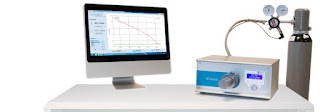Going into the 40th year of cutting-edge innovations.
We will shortly be distributing the 2019 anniversary edition of the CAEN Electronic
Instrumentation Product Catalog to the Swiss customer base. Click here to download your advanced PDF copy.
You
will find the index on the back, starting on page 283. It also depicts some 65
new products.
Since
2017, CAEN has become the exclusive worldwide distributor for Weeroc ASICs. X-TRONIX
is here to assist you also on this exciting line of off-the-shelf programmable
analog and mixed front-end ASIC chips for photon and particle detectors
readout. You can see the standard range on pages 209 to 214. Also, take a peak
on page 176 & 177 for the new Weeroc ASIC-based solution to readout SiPM
arrays with coincidence trigger logic.
A new
and recent release, the preamplifiers for Fission Chambers and Proton Recoil
which earlier this year made their formal entry on the Swiss market through a
team at EPFL. Details are on page 188.
To ensure your copy of the printed catalog, please drop us an email: info@xtronix.ch (Swiss market only - all others please contact info@caen.it)






